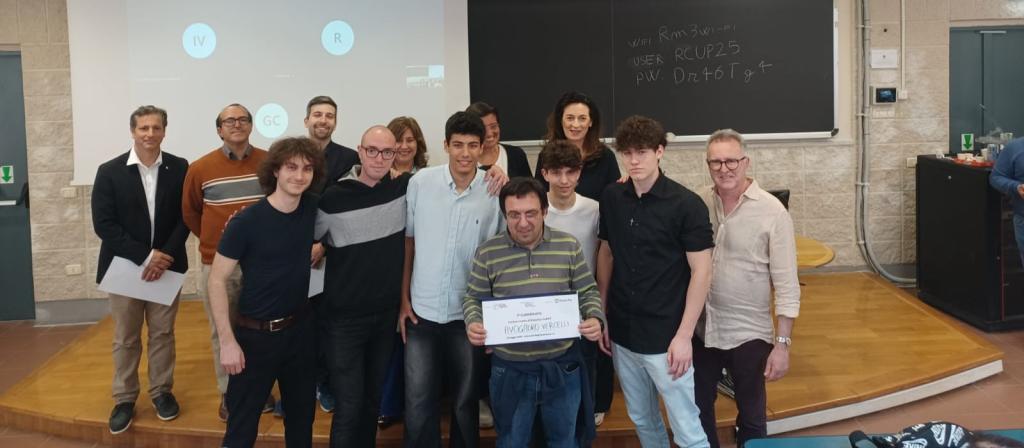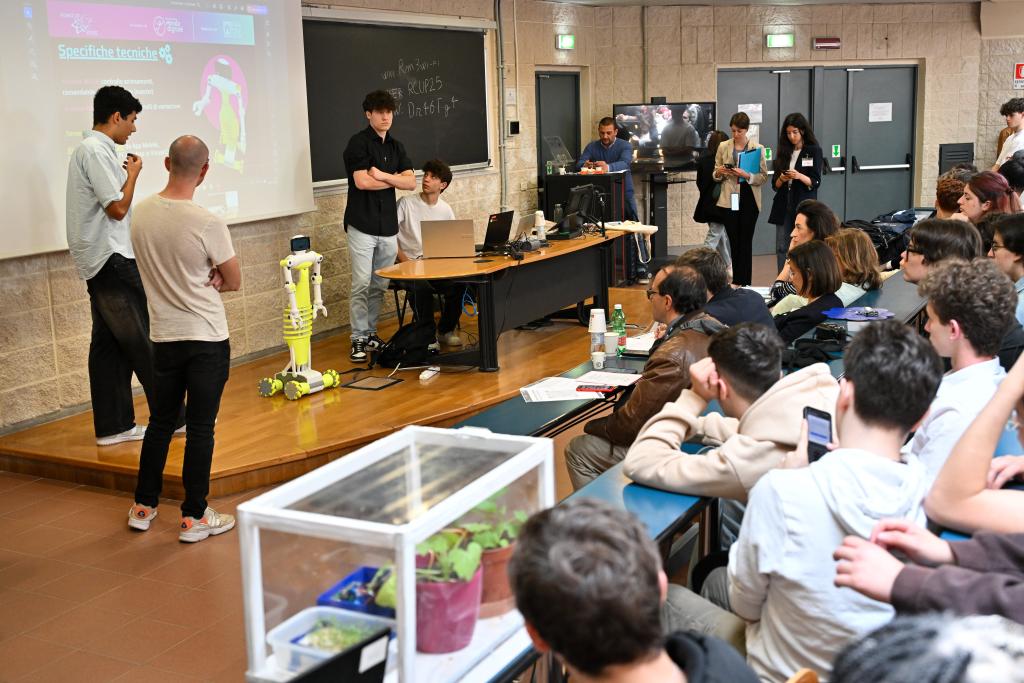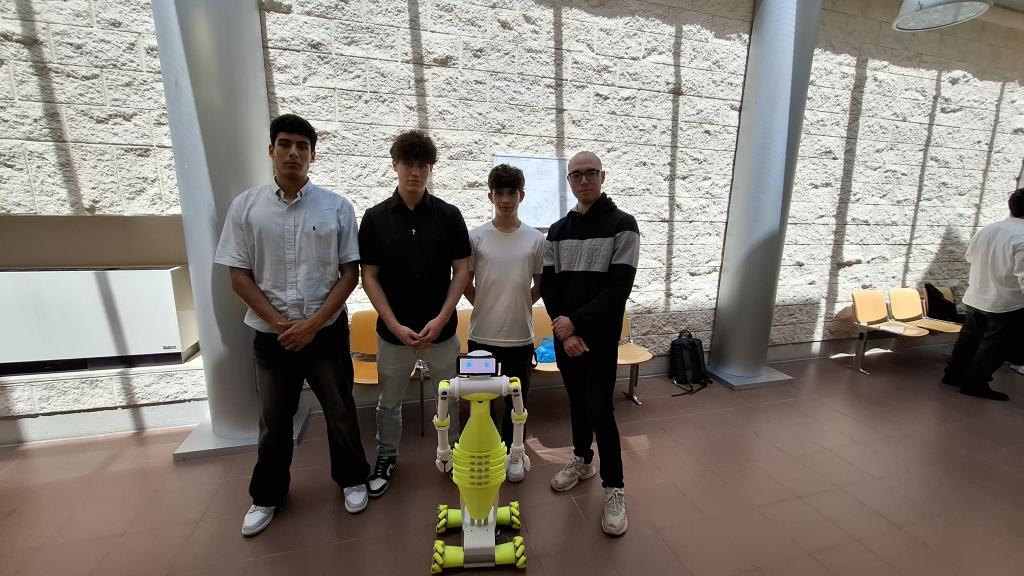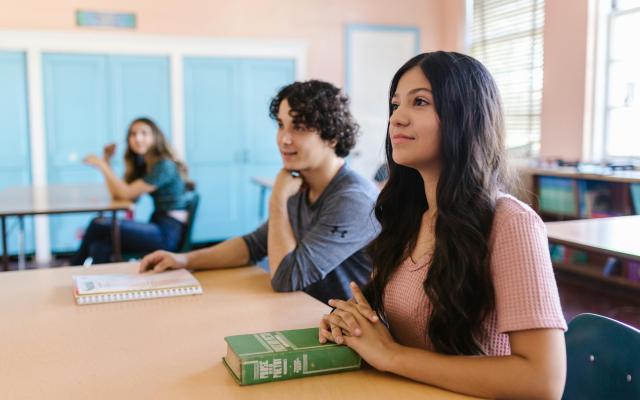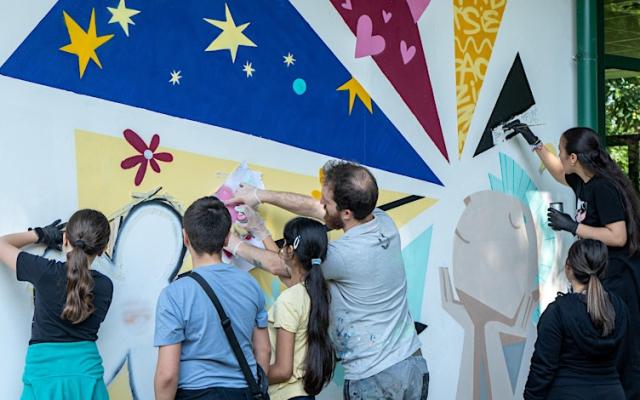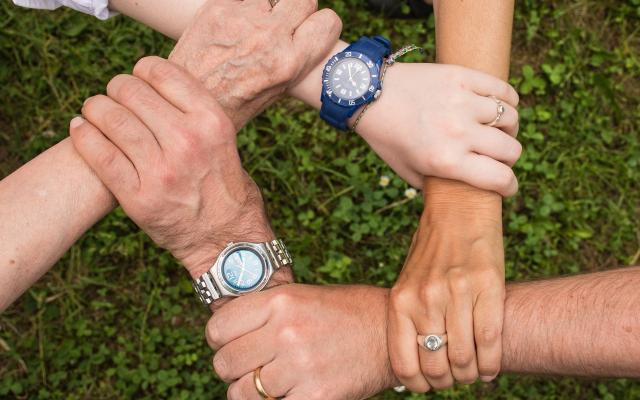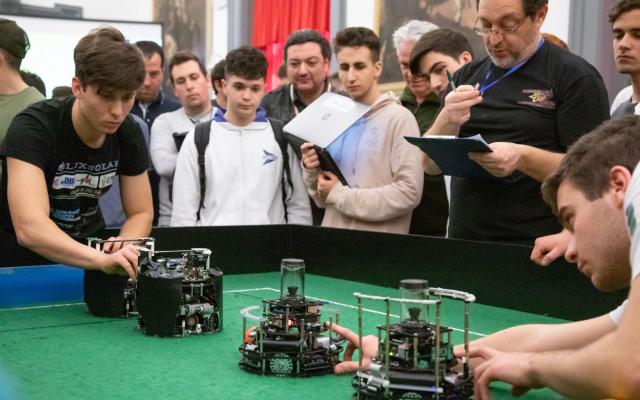RomeCup 2025 creative contest: Lampo 2.0 wins in the CoBOT category
The Lampo 2.0 project by the Amedeo Avogadro higher education institute in Vercelli, carried out with the University of Eastern Piedmont, won first prize in the CoBOT category at RomeCup 2025.
It is a collaborative humanoid robot designed to assist frail people, support work in small production environments or perform operations in situations that are hazardous to humans. Entirely programmed with Arduino Mega and Nano, Lampo 2.0 is equipped with omnidirectional wheels, contact and sound sensors, and voice control via a mobile app.
Versatile, accessible, replicable
Lampo 2.0 was created to be a low-cost (approximately £350) but high-performance personal robot. With a body height of 100 cm, printed in PETG (an acronym for Polyethylene Terephthalate Glycol-modified) and powered by high-torque servo motors, Lampo 2.0 can:
- respond to voice commands
- move in all directions thanks to omnidirectional wheels
- be controlled remotely from a PC or smartphone
High-torque servo motors are designed to generate high rotational force, even at low speeds. They are essential in robots such as Lampo 2.0 when it is necessary to move arms, joints or heavy structures with precision and power. The body has been printed in PETG because it is a material that combines strength, flexibility and lightness, making it ideal for robotic structures subject to mechanical stress. It is also easy to work with using common 3D printers, making the project more accessible and replicable.
Uses and application scenarios
Lampo 2.0 is designed for domestic, educational, healthcare and manufacturing environments:
- home care for the elderly or disabled
- motor rehabilitation support
- collaboration in small workshops or offices
- video surveillance and remote operations
Its affordability, user-friendly interface and open source structure also make it an ideal project for makers, schools and start-ups.
A look to the future
The team has already planned future developments with the integration of artificial intelligence, object recognition, advanced dialogue interaction and immersive control via VR headsets. The goal? To make Lampo 2.0 even more autonomous, adaptable and useful in different contexts of everyday life. The team has also launched a preliminary market analysis, identifying a growing interest in accessible humanoid robots, particularly in the home care, education and therapeutic support sectors, with concrete possibilities for commercial and social development.
The protagonists of the project
School: A. Avogadro di Vercelli, school led by headteacher Rossella Talice
Students: Luca Vandone, Lorenzo Conti, Gabriele Serrain
Teacher: Luca Oliva (Information Systems Technology and Design)
Partner university: University of Eastern Piedmont
Researcher: Massimo Canonico, Disit, Upo
University student: Paolo Testa, Disit, Upo
